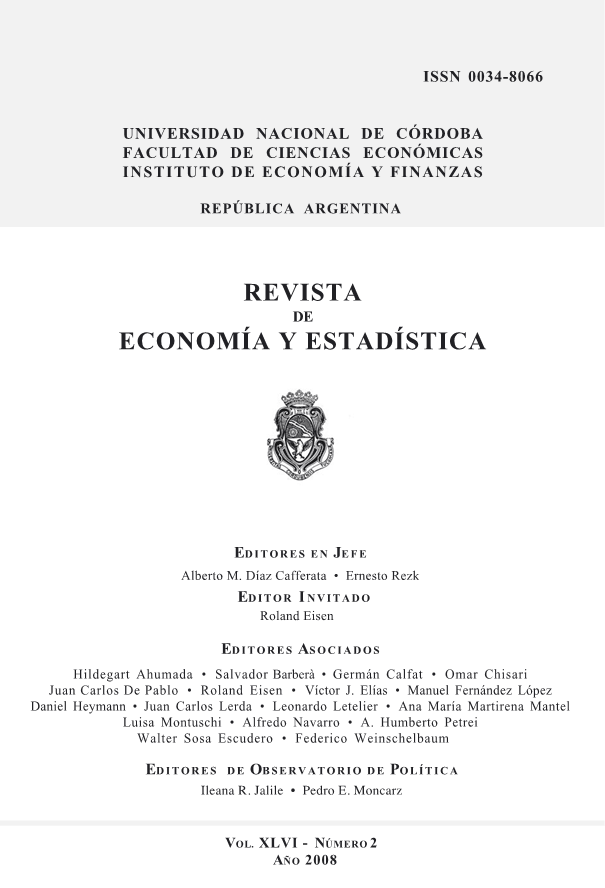Productivity Dynamics in the Distributive Trade Sector of Brazil, 1996-2004
DOI:
https://doi.org/10.55444/2451.7321.2008.v46.n2.3852Palabras clave:
distributive trade sector , decomposition analysis, BrazilResumen
This paper studies the productivity performance of distributive trade firms in Brazil. We decompose productivity growth within distributive trade industries into the contribution from entering, exiting, and continuing firms during 1996-2004. The decomposition indicates that productivity growth in the distributive trade sector of Brazil is largely due to productivity growth within continuing firms. Reallocation effects are small despite liberalization of services markets. Our findings of the distributive trade sector in Brazil are different from that in several OECD countries (in particular the UK and the US), where reallocation dynamics play an important role in accounting for growth.
Descargas
Descargas
Publicado
Número
Sección
Licencia
Derechos de autor 2008 de Vries Gaaitzen J.

Esta obra está bajo una licencia internacional Creative Commons Atribución-NoComercial-SinDerivadas 4.0.
Aquellos autores/as que tengan publicaciones con esta revista, aceptan los términos siguientes:
Los autores/as conservarán sus derechos de autor y garantizarán a la revista el derecho de primera publicación de su obra, el cuál estará simultáneamente sujeto a la Licencia Creative Commons Atribución-NoComercial-SinDerivar 4.0 Internacional que permite a terceros compartir la obra siempre que se indique su autor y su primera publicación esta revista.
Los autores/as podrán adoptar otros acuerdos de licencia no exclusiva de distribución de la versión de la obra publicada (p. ej.: depositarla en un archivo telemático institucional o publicarla en un volumen monográfico) siempre que se indique la publicación inicial en esta revista.
Se permite y recomienda a los autores/as difundir su obra a través de Internet (p. ej.: en archivos telemáticos institucionales o en su página web) antes y durante el proceso de envío, lo cual puede producir intercambios interesantes y aumentar las citas de la obra publicada. (Véase El efecto del acceso abierto)














